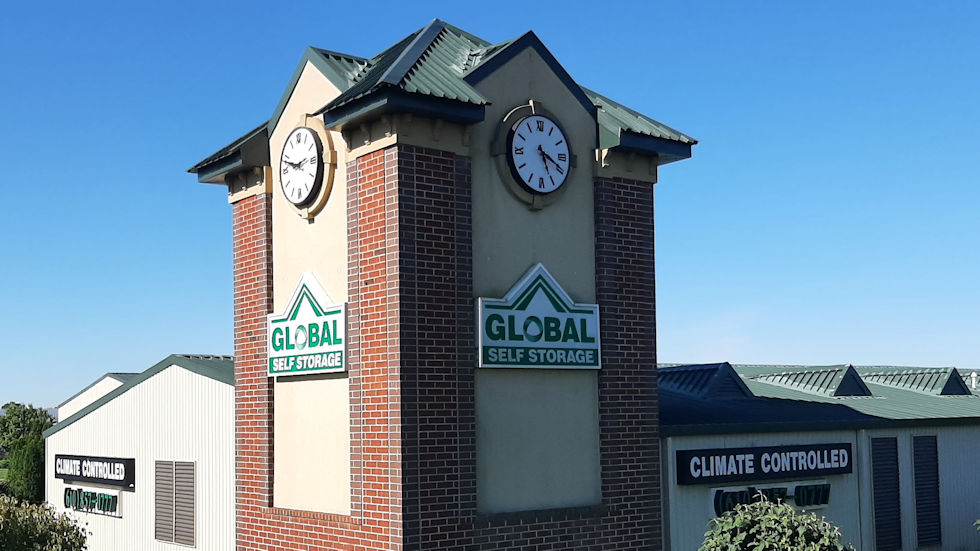With a focus on value-add properties in secondary and tertiary markets, Global Self Storage, Inc. (Nasdaq: SELF) is securing a niche foothold in the self-storage sector, backed by a balance sheet designed to support its long-term strategic growth.
The Millbrook, New York-based company has operated as a self-storage REIT since 2013 and listed on Nasdaq in 2016.
Mark Winmill, CEO and president of Global Self Storage, says the REIT continues to focus on secondary and tertiary markets primarily in the Northeast, mid-Atlantic, Midwest, and South-Central regions of the United States.
The company considers itself a "classic REIT growth story," the CEO says, in that it constantly manages the debt and equity of its balance sheet to fuel the company's disciplined growth and expansion.
Winmill says the REIT's professional and innovative management practices, combined with state-of-the-art technology, will continue to enable Global Self Storage to consider acquisitions of underperforming properties that others may overlook.
"For these underperforming properties, our proven ability to increase occupancy and create pricing power results in growing revenues and net operating income," Winmill says. Key to this strategy is focusing on tenant quality. "We believe our average tenant duration of three years speaks to our tenants' satisfaction with their storage experience with Global Self Storage," he adds.
An Evolution
Global Self Storage's growth through wholly-owned acquisitions and third-party management and joint venture initiatives has come about by carefully allocating its capital resources in markets that the company believes offer the best risk versus reward over the long term.
Winmill notes that as the development cycle began during 2013-14, new supply in various markets became the single biggest risk to financial performance of pre-existing properties.
"In all the storage markets—with and without such new supply pressures—storage demand has always relied on various demand drivers that have evolved over time," Winmill says. In 2020, the COVID-19 pandemic presented unexpected challenges to the company's overall business, tenants, employees, and the communities in which it operates. However, it demonstrated its resiliency.
"Through innovation, we were able to provide multiple contactless rental and payment options to help ensure safe, convenient, and timely service," Winmill says. He notes that the REIT has long provided online leasing and payment options, as well as on-site contactless solutions using kiosks that can facilitate rentals and automatically dispense locks.
These effective online and digital marketing initiatives that were already successfully in place have also proven to be integral to Global Self Storage's continued positive performance.
"We have long focused on attracting high-quality, longterm tenants," Winmill says. "We are also focused on our referral marketing program through which our tenants recommend Global Self Storage to their family, friends, and colleagues."
Meanwhile, in early 2019 the company launched its third-party management platform, Global MaxManagement℠, aimed at property developers and single-property/small-portfolio operators looking to enhance the performance of their self-storage properties.
The platform provides an additional revenue stream through management fees and tenant insurance premiums, Winmill says. "We continue to believe this offering will help foster brand awareness, create a captive acquisition pipeline, and contribute more meaningfully to revenues over time."
A Solid Portfolio
Global Self Storage's owned and managed portfolio, which includes 13 facilities with 6,970 units and nearly 1 million square feet of leasable space, saw its same-store occupancy climb to 96.3% in the second quarter of 2021.
"We have a good mix across properties with 60% traditional drive-up storage, 32% climate-controlled storage, and 8% outdoor storage boats/ cars/RVs," Winmill says. The company continues to explore potential acquisition and/or joint venture targets where its professional management and industry experience could add significant value, he notes.
According to the 2021 Self-Storage Almanac, mom and pop operators account for 71% of U.S. self-storage properties. This shows the high fragmentation in the market, which the company believes represents significant acquisition and third-party management opportunities.
The focus remains on the secondary and tertiary markets where the REIT is already active. "These locales are outside the top 25 metropolitan statistical areas, yet demonstrate strong demographic and market fundamentals, as well as constrained and slower supply growth," Winmill says.
A slew of recent transactions highlights Global Self Storage's strategy in action. In February 2020, Global Self Storage completed expansion of its Millbrook, New York store. A tailored lease-up program increased occupancy from 45.5% at completion to 95.4% in the second quarter of 2021.
In November 2019, the company acquired a recently developed property located in West Henrietta, New York. Amid the pandemic, the company undertook a store expansion project at this facility and occupancy increased from 77.9% at completion in August 2020 to 89.1% in the second quarter of 2021.
Meanwhile, in June 2020 the REIT completed the conversion of commercially leased space to climate-controlled self-storage units at its McCordsville, Indiana location. Occupancy increased from 79.1% at completion to 94.7% in the second quarter.
Sound Strategy
By focusing on secondary and tertiary markets, Global Self Storage has seen a strong performance in same store revenue and net operating income (NOI) growth for the past few years.
Brian Hollenden, managing director of Aegis Capital, notes self-storage performs well in both up and down economic cycles and over the past year and a half, COVID-19 has caused a lot of movement, as people have moved out of bigger cities, or are working from home and need extra space in their home for an office. The self-storage sector has benefited tremendously from this movement. That demand has resulted in occupancy reaching the highest level in the second quarter that Global Self Storage has ever recorded.
With the average length of stay extending to 3.1 years, the move-in rates the company has been able to charge are 10-20% higher than current in-place rents, Hollenden says. "As such, this trend bodes very well for larger rate increases for in-place tenants, in our view."
The key for Global Self Storage's continued success, Hollenden notes, will be its ability to source and buy more value-add storage facilities. "When the company applies its management systems and know-how to a property and maximizes revenue and NOI, it can add tremendous value over time," he says. "This is a very repeatable process for a strong operator such as Global Self Storage."
Future View
Global Self Storage recently expanded its revolving credit facility and completed an equity offering, which has increased the company's capital resources to approximately $21 million.
"A strengthened balance sheet and greater liquidity enables us to accelerate our growth organically through acquisitions and property expansions," Winmill says.
While the company continues to evaluate organic growth opportunities, such as existing facility expansion, it anticipates growth will largely stem from strategic acquisitions and/or joint ventures.
"We believe the experienced management and self-storage management technology we have in place will facilitate easy integration and scale up of any potential acquisitions or joint ventures—helping to drive our future growth," Winmill says.

